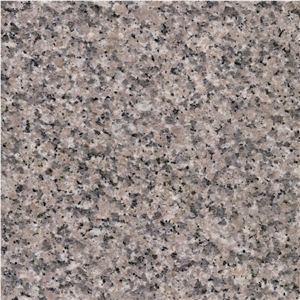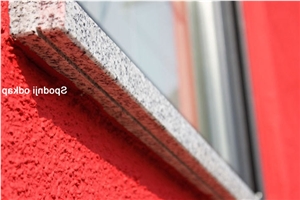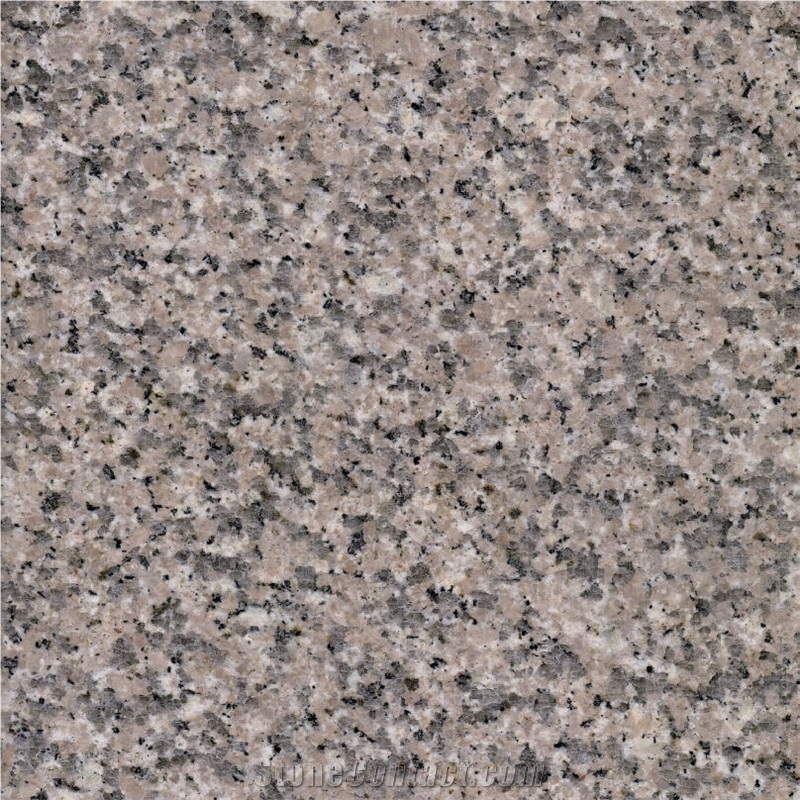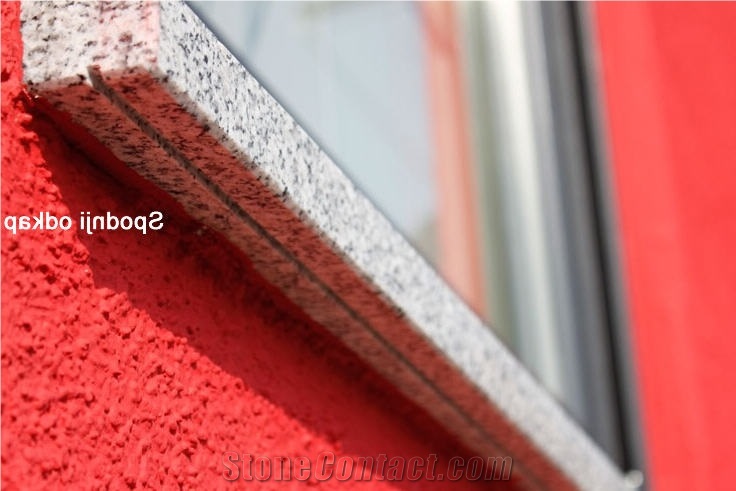G636 Granite
 China
(Shijing Town, Nan'an City, Fujian)
China
(Shijing Town, Nan'an City, Fujian)
G636 Granite, also referred to as Almond Pink Granite or Padang Rosa Granite, is a versatile and enchanting natural stone sourced from the quarries of Shijing Town, Nan'an City, located in Fujian, China. This granite variety is characterized by its delicate yet distinct qualities that make it a favored choice for a wide range of design applications.
The surface of G636 Granite is graced with a fine sesame grain texture, imparting a subtle tactile quality to its appearance. This understated texture adds depth and visual interest to the stone, making it a versatile canvas for a variety of design styles.
The color palette of G636 Granite is a symphony of cheery tones that blend harmoniously. The predominant light pink and beige hues infuse spaces with a sense of softness and warmth. Contrasting with these lighter shades are touches of black minerals, creating a balanced and dynamic interplay that contributes to the stone's overall charm.
The simplicity of the pattern in G636 Granite adds to its timeless appeal. The mingling of colors and grains forms a gentle rhythm that can seamlessly integrate into both traditional and contemporary settings. Its ability to effortlessly brighten up spaces makes it a popular choice for projects where a touch of elegance and versatility is desired.
G636 Granite, also known as Almond Pink Granite or Padang Rosa Granite, captures the essence of understated beauty and versatility. Its delicate color palette, fine texture, and inviting patterns make it an ideal option for a wide range of applications, from countertops to flooring and beyond. Whether incorporated into residential or commercial spaces, this granite variety showcases the natural splendor of the Earth while enhancing the aesthetics of the environments it adorns.

How can I cut G636 Granite cobbles?

How much does G636 Granite curb weight per foot?

Can China's G636 Granite be used in landscaping?

How much does a G636 Granite cobblestone weight?

What are the common surface treatments of G636 Granite cobblestones?

Is G636 Granite cobblestone slippery when wet?

How can I clean between G636 Granite cobblestones?

Is it G636 Granite kerbstone or curbstone?

What is the best thickness for G636 Granite bar countertops?

How long does a G636 Granite sink last?

Can China's G636 Granite be used exterior applications in very rainy climates?

How much does G636 Granite kerbstone weight per meter?

Is it better to cut G636 Granite wet or dry?

How many square feet does 1 ton of G636 Granite cobblestone cover?

Should I do undermount sink with G636 Granite?

What are the different types of G636 Granite curbs?

What is the average density of China's G636 Granite?

Is China's G636 Granite an expensive stone?

What is the sand between G636 Granite cobblestones?

What are the common sizes of G636 Granite cobble stones?

What grade is China's G636 Granite?

What is the coefficient of friction of Acid Washed Finish China's G636 Granite tiles?

How standard thick is a G636 Granite curbstone?

How thick should G636 Granite cobblestone be for a driveway?

Can China's G636 Granite be used in a office?

How many square meter does 1 ton of G636 Granite cobblestone cover?

Are there color variations of China's G636 Granite?

Which sink is better G636 Granite or stainless steel for kitchen?

What is the difference between G636 Granite cobbles and pavement tiles?

What is the disadvantage of G636 Granite sink?

How thick is China's G636 Granite slabs?

Can China's G636 Granite be used outdoors?

Can I cut G636 Granite tiles myself?

Do G636 Granite sinks crack easily?

Is G636 Granite good for a bathroom vanity top?

Why are cobblestones called cobblestones?

What is the difference between G636 Granite cobbles and paving setts?

What size is a G636 Granite cobblestone?
-

-

-

Shenzhen Chiva Industry Co., Ltd.
 China
China
 11YRDiamond members are premium members on platform, providing members with comprehensive approach to promoting their products, increasing products exposure and investment return to maximize.
11YRDiamond members are premium members on platform, providing members with comprehensive approach to promoting their products, increasing products exposure and investment return to maximize.
 Verified Supplier is for prove company authenticity,including business license,trade license and effective office space,to enhance buyers' trust to suppliers and their products, reducing communication costs.
Verified Supplier is for prove company authenticity,including business license,trade license and effective office space,to enhance buyers' trust to suppliers and their products, reducing communication costs.
Contact Supplier
-

 Spain
Spain
 11YRDiamond members are premium members on platform, providing members with comprehensive approach to promoting their products, increasing products exposure and investment return to maximize.
11YRDiamond members are premium members on platform, providing members with comprehensive approach to promoting their products, increasing products exposure and investment return to maximize.
Contact Supplier
-

-

 China
China
 12YRDiamond members are premium members on platform, providing members with comprehensive approach to promoting their products, increasing products exposure and investment return to maximize.
12YRDiamond members are premium members on platform, providing members with comprehensive approach to promoting their products, increasing products exposure and investment return to maximize.
Contact Supplier
-

Shenzhen Chiva Industry Co., Ltd.
 China
China
 11YRDiamond members are premium members on platform, providing members with comprehensive approach to promoting their products, increasing products exposure and investment return to maximize.
11YRDiamond members are premium members on platform, providing members with comprehensive approach to promoting their products, increasing products exposure and investment return to maximize.
 Verified Supplier is for prove company authenticity,including business license,trade license and effective office space,to enhance buyers' trust to suppliers and their products, reducing communication costs.
Verified Supplier is for prove company authenticity,including business license,trade license and effective office space,to enhance buyers' trust to suppliers and their products, reducing communication costs.
Contact Supplier
-

 China
China
 1YRDiamond members are premium members on platform, providing members with comprehensive approach to promoting their products, increasing products exposure and investment return to maximize.
1YRDiamond members are premium members on platform, providing members with comprehensive approach to promoting their products, increasing products exposure and investment return to maximize.
 Verified Supplier is for prove company authenticity,including business license,trade license and effective office space,to enhance buyers' trust to suppliers and their products, reducing communication costs.
Verified Supplier is for prove company authenticity,including business license,trade license and effective office space,to enhance buyers' trust to suppliers and their products, reducing communication costs.
Contact Supplier
-

-

XIAMEN HAORONG IMPORT & EXPORT CO., LTD.
 China
China
 14YRDiamond members are premium members on platform, providing members with comprehensive approach to promoting their products, increasing products exposure and investment return to maximize.
14YRDiamond members are premium members on platform, providing members with comprehensive approach to promoting their products, increasing products exposure and investment return to maximize.
 Verified Supplier is for prove company authenticity,including business license,trade license and effective office space,to enhance buyers' trust to suppliers and their products, reducing communication costs.
Verified Supplier is for prove company authenticity,including business license,trade license and effective office space,to enhance buyers' trust to suppliers and their products, reducing communication costs.
Contact Supplier
The request includes: 1. surface finished, size 2. quantity required










 Moldova
Moldova